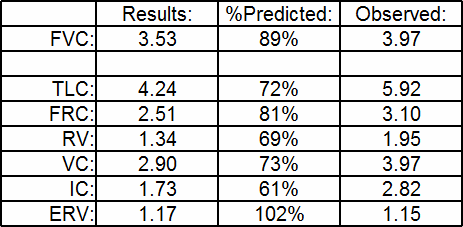For the last couple of years it seems that I’ve had more problems than usual with lung volume tests. Even though this seems to date from the time that my lab went through its hardware and software upgrade and we started performing N2 washouts I suspect that these problems have been around for a long time and these events just heightened my awareness of lung volume testing problems.
My lab performs helium dilution, N2 washout and plethysmographic lung volume tests. When you are assessing the quality of lung volume tests the first problem for the helium dilution and plethysmographic techniques is whether or not the Functional Residual Capacity (FRC) was accurately measured and for N2 washout, it’s whether or not the Residual Volume (RV) was accurately measured. Leaks are always an issue for any of these measurement techniques and for helium dilution and N2 washout leaks will almost always cause the Total Lung Capacity (TLC) to be overestimated. For plethysmography the picture is less clear since leaks can cause TLC to be either over- or under-estimated.
Once you accept that the initial measurement of FRC or RV is accurate, however, the next question is whether the SVC is accurate or not. Since SVC is a more relaxed test than a forced vital capacity the SVC volume should be at least the same as the FVC volume and it is often larger. When I see an SVC that is smaller than the FVC I tend to think that the calculated TLC is probably okay and it’s the RV that is more likely to be overestimated. This is because the Inspiratory Capacity (IC) part of the SVC maneuver (“take as deep breath in as you can!”) is the easiest part and when the SVC is low, it is usually because the Expiratory Reserve Volume (ERV, “blow everything out that you can!”) is underestimated.
This report came across my desk a couple of days ago. The lung volumes were performed by helium dilution.

